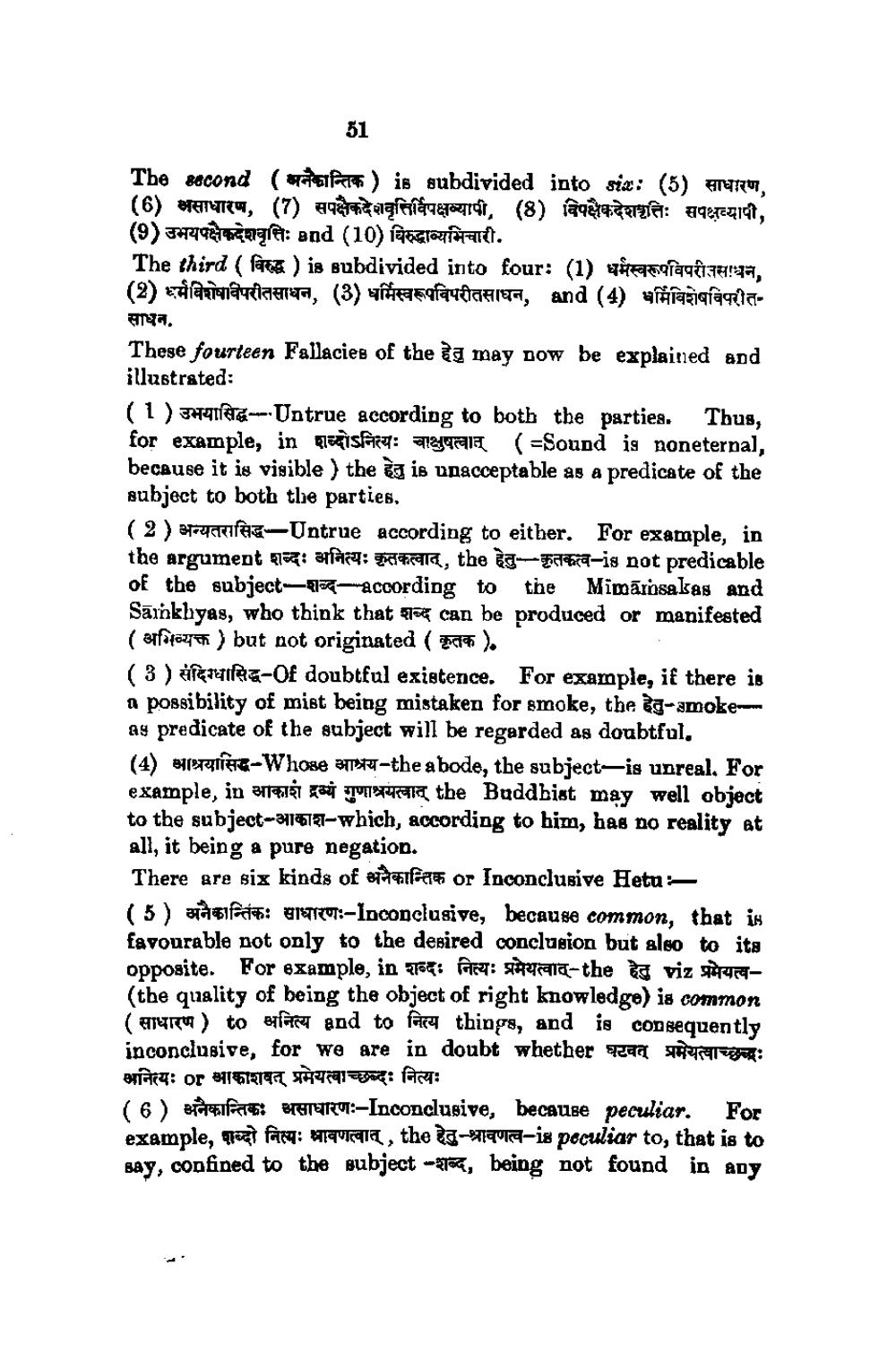________________
51
The second (f) is subdivided into six: (5) (6) असाधारण, (7) सपक्षैकदेशवृत्तिर्विपक्षव्यापी (8) विपक्षैकदेशवृत्तिः सपक्षव्यापी, (9) उभय पक्षैकदेशवृत्तिः and ( 10 ) विरुद्धाव्यभिचारी.
The third (f) is subdivided into four: (1) viamfaqîzura, (2) धर्मविशेषविपरीत साधन, (3) धर्मिस्वरूपविपरीतसाधन, and ( 4 ) धर्मिविशेषविपरीत
साधन.
These fourteen Fallacies of the 3 may now be explained and illustrated:
(1) - Untrue according to both the parties. Thus, for example, in sfry: g (=Sound is noneternal, because it is visible) the is unacceptable as a predicate of the subject to both the parties.
(2) auffz-Untrue according to either. For example, in the argument] शब्दः अनित्यः कृतकत्वात्, the हेतु कृतकत्व is not predicable of the subject--according to the Mimamsakas and Samkhyas, who think that can be produced or manifested ( अभिव्यक्त ) but not originated ( कृतक ).
(3) ff-Of doubtful existence. For example, if there is a possibility of mist being mistaken for smoke, the g-smokeas predicate of the subject will be regarded as doubtful.
(4) -Whose a-the abode, the subject-is unreal. For example, in आकाश द्रव्यं गुणाश्रयत्वात् the Buddhist may well object to the subject--which, according to him, has no reality at all, it being a pure negation.
There are six kinds of eff or Inconclusive Hetu:
(5) àft: -Inconclusive, because common, that is favourable not only to the desired conclusion but also to its opposite. For example, in शब्दः नित्यः प्रमेयत्वात् - the हेतु viz प्रमेयत्व(the quality of being the object of right knowledge) is common ( साधारण ) to अनित्य and to नित्य things, and is consequently inconclusive, for we are in doubt whether a : अनित्यः or आकाशवत् प्रमेयत्वाच्छन्दः नित्यः
(6) eft :-Inconclusive, because peculiar. For example, शब्दो नित्यः श्रावणत्वात्, the हेतु श्रावणत्व - is peculiar to, that is to Bay. confined to the subject -, being not found in any




